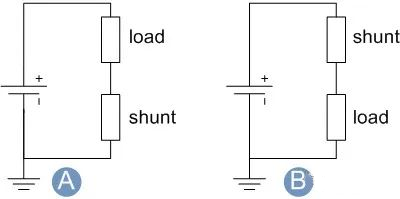Generally, the contactor working principle is similar. However, different types of contactors may be a bit different in working principle. This article will introduce the contactor working principle from the magnetic contactor working principle, the vacuum contactor working principle, the DC contactor working principle, and the AC contactor working principle.
1. Magnetic Contactor Working Principle

Magnetic contactors are widely used in industrial and commercial applications due to their reliability and efficiency. The working principle of a magnetic contactor is based on electromagnetism. When the contactor’s coil is energized by an electrical signal, it generates a magnetic field. This magnetic field attracts a movable iron core or armature, pulling it towards the stationary contacts. As the armature moves, it closes the circuit by connecting the main contacts, allowing current to flow through the load.
When the coil is de-energized, the magnetic field collapses, and a return spring pushes the armature back to its original position, breaking the circuit and stopping the current flow. Magnetic contactors are valued for their fast switching capability, making them ideal for controlling motors, lighting, and heating systems.
2. Vacuum Contactor Working Principle

Vacuum contactors operate under a different principle, designed to handle high-voltage applications where arc suppression is critical. The working principle of a vacuum contactor involves the use of a vacuum as the medium for arc extinction.
When the vacuum contactor is energized, an electromagnetic force moves the contact mechanism within a sealed vacuum chamber. As the contacts close, current flows through the circuit. The key advantage of vacuum contactors lies in their ability to extinguish arcs quickly when the contacts open. In a vacuum, the lack of ionized particles prevents the formation of a sustained arc, making it highly effective for interrupting high-voltage currents.
Vacuum contactors are commonly used in power distribution systems, heavy-duty industrial applications, and where frequent switching is required without the risk of arc-induced damage.
3. DC Contactor Working Principle
DC contactors are specifically designed for direct current (DC) applications. The working principle of a DC contactor is similar to that of a magnetic contactor but tailored for DC circuits. When the coil of a DC contactor is energized, it creates a magnetic field that pulls the armature towards the contacts, closing the circuit and allowing current to flow.
One key aspect of DC contactors is the management of the arc that forms when the contacts open. DC arcs are more difficult to extinguish than AC arcs because the current does not naturally pass through zero, as it does in AC systems. To mitigate this, DC contactors often include arc blowout magnets or arc chutes that help direct and dissipate the arc energy, ensuring the circuit is safely interrupted.
DC contactors are widely used in applications such as electric vehicles, battery charging systems, and renewable energy systems where DC power is prevalent.
4. AC Contactor Working Principle

AC contactors are designed for alternating current (AC) circuits and are among the most commonly used contactors in electrical systems. The working principle of an AC contactor is based on electromagnetic induction. When the AC voltage is applied to the coil, it creates a magnetic field that varies with the AC signal. This varying magnetic field induces the movement of the armature, closing the contacts and allowing current to flow.
A unique feature of AC contactors is the use of shading coils or rings. These are copper rings placed on the magnetic core, which help maintain the magnetic flux during the zero-crossing points of the AC waveform. This ensures that the armature does not chatter or oscillate, providing smooth and reliable operation.
AC contactors are used in a wide range of applications, including motor control, HVAC systems, and general-purpose switching in commercial and industrial environments.
Conclusion
Understanding the working principles of different types of contactors is crucial for selecting the right component for a specific application. Magnetic contactors are ideal for general-purpose switching, vacuum contactors excel in high-voltage environments, while DC and AC contactors are tailored for their respective electrical systems. Each type offers distinct advantages, ensuring reliable and efficient operation in various electrical control systems.






